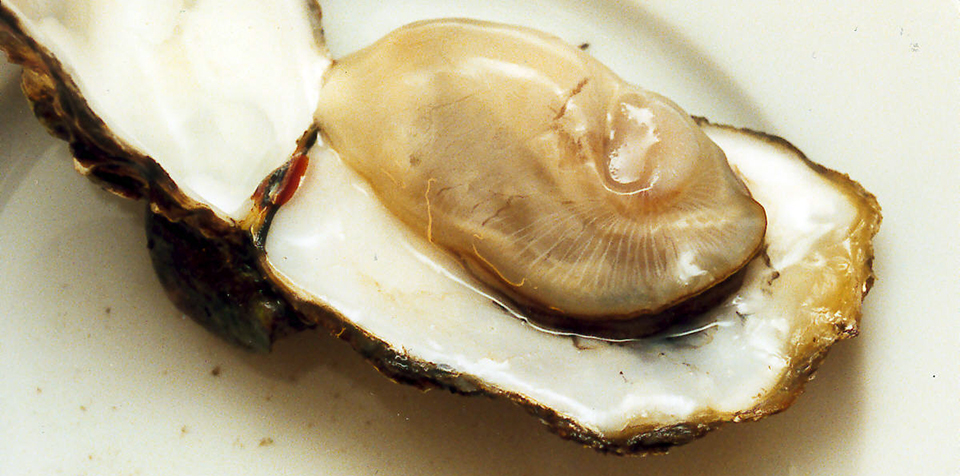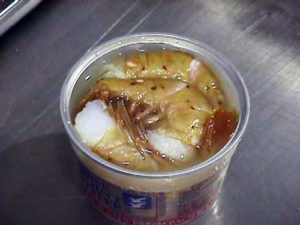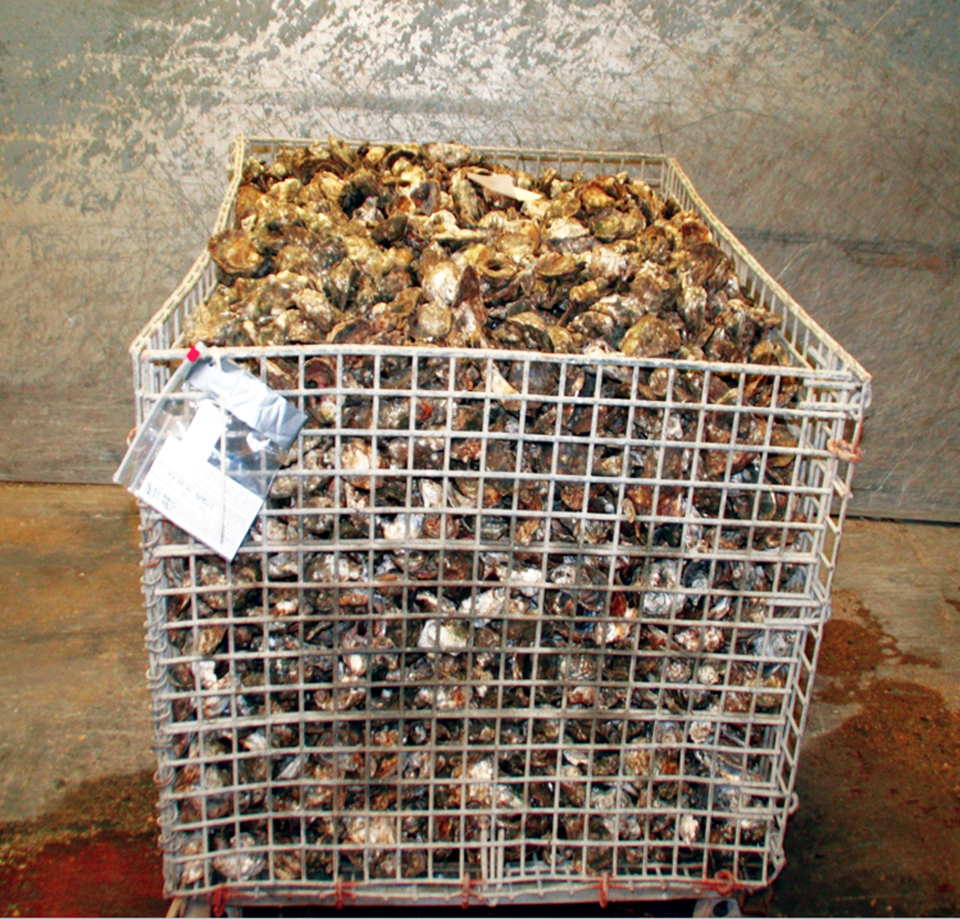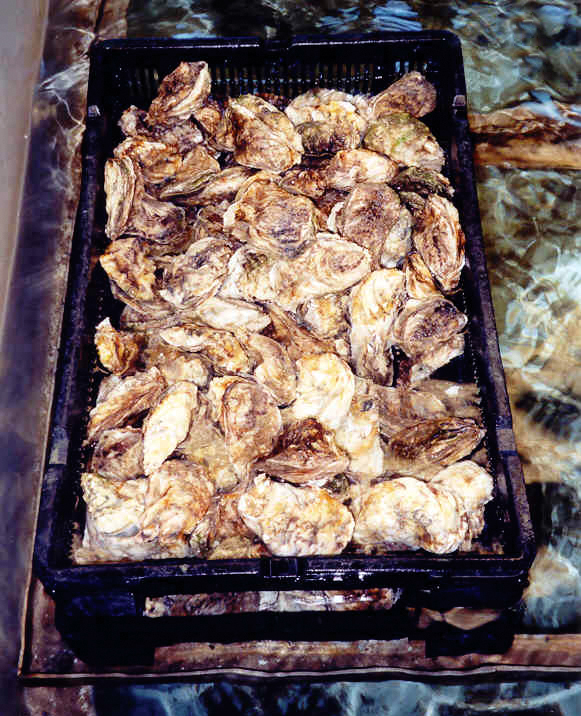Expense an obstacle for widespread adoption

High hydrostatic pressure processing (HHP), which got its start over a century ago, is finally reaching the point where it can be commercially applied on a large scale. The technology subjects packaged or unpackaged liquid or solid foods to pressures of 40,000 to 80,000 pounds per square inch, usually for five minutes or less.
Applied evenly from all sides, the high pressure does not destroy the food, but inactivates microorganisms both on the surface of and inside the food by affecting the molecular structure of the chemical compounds necessary for their metabolism. HHP is equally effective on molds, bacteria, viruses, and parasites, and has even achieved some success in treating bacterial spores, which are notoriously resistant to many normal biocidal processing treatments.
Advantages of HHP
The technology is attracting increased attention in the fish- and shellfish-processing industries because it accomplishes the near elimination of pathogenic or spoilage microorganisms at or near room temperature. Only a small amount of energy is required to compress solid or liquid seafood products, as compared to heating them to 100º C. HHP offers several other advantages, including reduced process times; reduced physical and chemical changes; retention of freshness, flavor, texture, appearance, and color; elimination of vitamin C loss; reduced ice crystal damage; and reduced functionality alterations compared to traditional thermal processing.
It can be used, for example, as a means to accomplish nonthermal treatment of raw or fresh oysters, reducing bacterial loads without causing significant changes in appearance, flavor, texture, and nutritional qualities. As such, the process holds out special promise for products where rawness or freshness is a key selling point. Oysters are a natural fit, as are fresh juices, sashimi, and any product where disease outbreaks have been associated with minimal processing of the product. Seafood pates and salads are ideal products for HHP treatment.
The further processing required to produce these latter products provides an opportunity for microbial contamination with spoilage and pathogenic microorganisms. Also, the incorporation of raw vegetables (such as parsley, cilantro, green onions, and garlic) in salads can result in high mold populations exceeding the product specifications established by many institutional buyers. In both cases, HHP processing can help.
HHP curtails many of the disease risks associated with the consumption of raw oysters. Research has shown that many Vibrio microorganisms (parahaemolyticus, cholerae, vulnificus) are destroyed by customary HHP operating pressures. Research is currently being conducted to determine how HHP affects Norwalk virus and the parasite Cryptosporidium parvum. For bivalves, HHP offers the extra benefit of opening the shell, which saves time and labor.
HHP can also inactivate certain proteins (enzymes) that result in the deterioration of food. While the decomposition of proteins and lipids are primarily due to enzymes that result from microbial contamination, many fish and shellfish species have active enzyme systems of their own that also contribute to product spoilage at refrigeration temperatures. The inactivation of microorganisms and enzyme systems in seafood has economic and food safety significance.
In addition, high-pressure processing is less likely to foment the kind of hype and fear that has hampered the proliferation of other methods of food preservation and processing, such as irradiation or the use of food additives. As with pasteurization or thermal processing – which, unlike HHP, does affect flavor, odor, appearance, and texture – people simply do not fear the idea of pressure-treating food.
Capital cost high
So why isn’t there a HHP unit set up in every processing facility in the world? The main reason is that the capital cost for a commercial-scale HHP unit – over U.S. $1 million for large systems – can easily exceed the available capital of many seafood firms.
The typical HPP system consists of a high-pressure vessel, a means to close the vessel off, a system for pressure generation, a system for temperature and pressure control, and a material-handling system. The treatment is improved through the use of a pressure-transferring medium, which is usually water. The pressure is transmitted in a uniform and instantaneous manner throughout the whole biological sample, regardless of direct contact with the pressure medium.
The machinery required is complex and requires extremely high precision in its construction, use, and maintenance. Over the past few years, manufacturers have made significant progress in simplifying the installation and maintenance of HPP equipment.
Limited use
The second reason why HHPs are not more popular is that processing through a HHP unit immediately becomes a rate-limiting step in most processing operations. For example, most oysters on the U.S. Atlantic coast are sold shucked between the Thanksgiving and Christmas holidays. In order to meet the product demand, a firm may be required to purchase more than one HHP device. However, during the remainder of the year, one of the machines may be idle. Most seafood firms are small businesses and cannot make a significant capital investment that cannot be depreciated in five or less years.
HHP use expanding
Still, HHP units are in place at a number of oyster-processing facilities, juice processors, meat processors, and vegetable processors within North America. One processor now has nine systems in operation. In such cases, the benefits that HHP confers outweigh its limitations.
Consumers of raw shellfish, which is already a high-dollar product, are happy to have an option that effectively eliminates the health risk they previously took on with every instance of consumption, and are willing to pay more to purchase safety-enhanced raw products. The favorable response of consumers is likely to drive greater penetration of HHP technology into all areas of seafood processing. It has excellent potential for use in processing crabs, shrimp, crawfish, lobsters, and hot- and cold-smoked products to produce a safer product free from some vegetative pathogens.
Salmonella and listeria
Of special concern is the elimination of various Salmonella microorganisms and Listeria monocytogenes, both of which have a zero-defect action level in ready-to-eat products. Listeria monocytogenes has had a significant legal and economic impact on the fish- and shellfish- processing industry.
Some firms have entered into consent decrees with the federal court system, and others have decided to cease processing operations rather than engage in a lengthy and expensive litigation process. Several firms have incurred substantial economic losses through product recalls and temporary closure while they implemented a comprehensive quality assurance program to eliminate or reduce the presence of Listeria monocytogenes in their processing facilities.
Extra safety measure

HHP technology has special application in the food service industry. Many seafood products contain known patho-gens that are expected to be killed or inactivated by a thermal process immediately prior to serving. However, some food service personnel do not always adhere to the appropri-ate preparation requirements, due either to indifference or the rush to bring food to a customer. Consequently, a HHP process applied at a processing facility to completely eliminate pathogens or reduce their levels to an acceptable level provides an extra safety measure to institutional customers.
Feasability through production alternatives
Processors who want to access the benefits of HHP technology need to find an economically feasible way of integrating it into their business planning. Smaller production units currently cost U.S. $600,000 and larger-capacity equipment has current pricing of up to U.S. $1.7 million. Processors could form cooperative arrangements with other processors to share the expense and use of the equipment, or sell time on their machine for batch processing of other products. Additionally, single-commodity processors, such as facilities that package oysters, crabs, smoked fish, crawfish, or shrimp, may need to consider expanding their range of products in order to make full use of the equipment.
Conclusion
Despite the obstacles, the benefits of high hydrostatic pressure processing make it a worthwhile investment in the long run. As with many other technologies, costs can be expected to drop as the demand for the equipment increases. Guidelines for the optimal processing of a variety of products are needed, however, so companies can skip the in-house experimentation process once the machine is installed and start turning out properly processed products right away.
To this end, Virginia Tech in Blacksburg, Virginia, USA will be installing a commercial-scale HHP unit to evaluate the effects of various processing parameters on product quality and safety. Other educational institutions may incorporate commercial-scale projects individually or in cooperation with industry as part of their research, development, and outreach programs.
(Editor’s Note: This article was originally published in the February 2003 print edition of the Global Aquaculture Advocate.)
Now that you've reached the end of the article ...
… please consider supporting GSA’s mission to advance responsible seafood practices through education, advocacy and third-party assurances. The Advocate aims to document the evolution of responsible seafood practices and share the expansive knowledge of our vast network of contributors.
By becoming a Global Seafood Alliance member, you’re ensuring that all of the pre-competitive work we do through member benefits, resources and events can continue. Individual membership costs just $50 a year.
Not a GSA member? Join us.
Author
-

George J. Flick, Jr., Ph.D.
Food Science and Technology Department
Virginia Tech (0418)
Blacksburg, Virginia 24061 USA[117,100,101,46,116,118,64,103,107,99,105,108,102]
Tagged With
Related Posts

Health & Welfare
New approaches can help ensure safety of raw farmed oysters
Practical post-harvest oyster processing methods are needed. Preliminary studies evaluated the potential of high-salinity relaying to control Vibrio levels in raw oysters.

Intelligence
Cryptosporidium: Emerging pathogen associated with shellfish
Cryptosporidium parvum, an emerging waterborne pathogen, is frequently isolated in shellfish and can cause diarrhea, fever, nausea, weakness and abdominal cramping.

Intelligence
Proper processing destroys V. parahaemolyticus in seafood
V. parahaemolyticus presents a food safety hazard for those who consume raw shellfish. The organism can grow post-harvest in some shellfish species, especially oysters.

Health & Welfare
Hepatitis A and shellfish
Hepatitis A virus (HAV) is a widespread and serious foodborne pathogen commonly associated with shellfish-vectored outbreaks.

